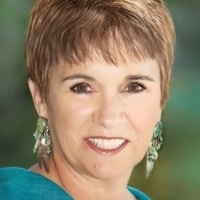By Claudia Black, Ph.D., Senior Fellow of The Meadows
“It’s true that as long as we live we may keep repeating the patterns established in childhood. It’s true that the present is powerfully shaped by the past. But, it’s also true that insight at any age keeps us from singing the same sad songs again.”
Judith Viorst
Necessary Losses
To be able to put the past behind and not repeat those same sad songs, one needs to take four primary steps.
1. A—Affective: Explore past history
The purpose of exploring the past is not to assign blame but to acknowledge reality and grieve one’s pain. In other words, people have to admit to themselves the truth of what happened, rather than hide or keep secret the hurt and wounds that occurred. There is no doubt denial became a skill that served one well as a child in a survival mode. Unfortunately, denial, which begins as a defense, becomes a skill that interferes with how people live their lives today. When someone lets go of denial and acknowledge the past, grieves the pain that is associated with the losses, it is an opportunity to put the past into perspective.
As people move from the process of breaking their denial and grieving their pain, they need to move into the next step. (Yes, C comes before B ☺)
2. C—Cognitive: Connect the past to the present
Connecting the past to the present means asking “How does this past pain and loss influence who I am today?” “How does the past affect who I am as a parent, in the workplace, in a relationship, how I feel about myself?” The cause and effect connections discovered between past losses and present-day life offers a focus for recovery. It allows one to become more centered in the here and now. This clarity will identify the areas for further healing.
3. C—Cognitive: Challenge internalized beliefs
Challenging internalized beliefs means asking, “What beliefs have I internalized from my growing up years? Are they helpful or hurtful to me today? What beliefs would support me in living a healthier life?” So often people internalize beliefs such as, “It is not okay to say no,” or “Other people’s needs are more important than my own,” or “The world owes me and I am entitled.” “People will take advantage of you every chance they can.” If these beliefs are getting in the way of how someone wants to live their life, they need to take responsibility for them. They need to not only be willing to recognize how that belief is sabotaging their healing but to create new beliefs in their place.
4. B—Behavioral: Learn new skills
Learning new skills means asking, “What did I not learn that would help me today?” E.g., How to set limits, how to perceive options, to ask for help. Some of the skills learned during childhood were often skills and behaviors that were developmentally premature and/or learned from a basis of fear or shame. When the latter occurs there is a tendency to feel like an imposter. Developing skills is what ultimately gives people greater choices in their lives, and it is in addressing the feelings and beliefs associated with any skill that enhances greater confidence in their behavioral change.
These four steps are not always linear, but they all need to be incorporated into whatever the specific issue is that is being addressed. If someone only does the affective work, the healing has the potential to become a blaming process. If someone only does the cognitive work, the person has the potential to continue to present a false sense of self. If someone only does the behavioral work, one can demonstrate great skill in a contained setting but not demonstrate the ability to follow through on that skill in the real world. Hence the need for the ABCs, or shall I say the ACBs.
Trauma Treatment at The Meadows
Specializing in trauma treatment, The Meadows works with clients from a bottom-up, top-down perspective. Trauma therapies such as SE, SP, EMDR, and mindful practices are integrated throughout the program. Cognitive-behavioral therapy is integrated throughout the clinical work.

